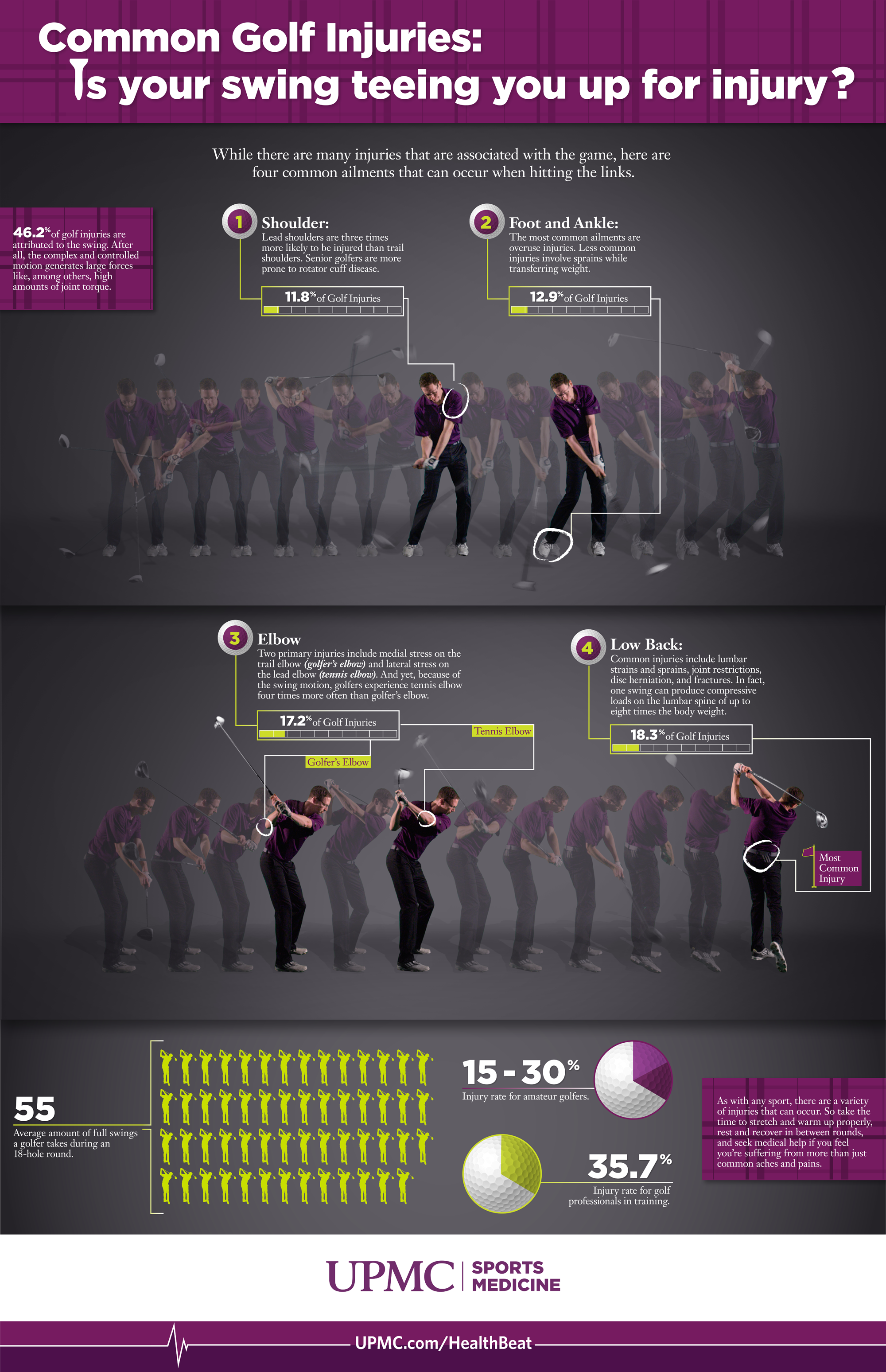Although golf is not a contact sport, it has its own opportunities for injuries to be incurred while playing the game. Just the action of swinging the club can cause injury: In fact, 46% of golf injuries are attributed to the swing.
According to data from the National Golf Foundation more than 25 million people ages 6 and over played golf on a U.S. course in 2021. There were another 12 million people who took part in off-course activities, such as driving ranges, indoor golf simulators, or venues like Topgolf.
Never Miss a Beat!
Subscribe to Our HealthBeat Newsletter!
Thank you for subscribing!
You can now select the specific newsletters you'd like to receive.
You are already subscribed.
Subscribe to more newsletters in our email preference center.
Sorry, an error occurred. Please try again later.
Get Healthy Tips Sent to Your Phone!
Most Common Golf Injuries
A golf swing is a complex and controlled motion. It generates force through an expansive range of rotational movement that also creates a great amount of joint torque. The average golfer takes approximately 55 full swings during an 18-hole round of golf. Add that up over many games and practice drives and you can see why the primary cause of injury is repetitive motion.
Amateur golfers have a 15% to 30% injury rate per year. Golf professionals in training have a 7% injury rate per year.
While there are many injuries associated with the game of golf, there are four common ailments that strike most on the links. The most common injuries involved the low back (18%), the elbow (17%), the foot and ankle (13%), and the shoulder (12%).
Low back injuries
The golf swing can produce compressive loads up to eight times body weight on the lumbar spine. It also creates very high shear and rotational forces.
Then there’s crunch factor: Lumbar spine flexion, rotation, and side-bending to the trail side of the lumbar spine at impact can create overload conditions at the joints in the lumbar spine.
Golfers who have a history of low back pain typically have limitation in the range of motion of their hips. Limited hip mobility leads to increased stress on lumbar spine structures. Common golf-related back issues include:
- Lumbar strains/sprains.
- Joint restrictions.
- Disc herniations.
- Fractures.
Elbow injuries
Two primary sources of elbow injury from golf include medial stress on the trail elbow (medial epicondylitis or golfers elbow) and lateral stress on the lead elbow (lateral epicondylitis or tennis elbow). This injury is thought to be due to the amount of wrist action and control required during the golf swing and follow-through.
Foot and ankle injuries
The most common golf-related foot and ankle injuries result from overuse and include plantar fasciitis, Achilles tendinosis, tibialis posterior tendinosis, and peroneal tendinosis. Acute foot and ankle injuries are less common and involve sprains while transferring on/off the tee box and into and out of bunkers.
Shoulder injuries
The most common golf-related shoulder injuries are due to overuse and are three times more likely to involve the lead shoulder than the trail shoulder. These injuries include: impingement, biceps tendinopathy, rotator cuff strains, and subacromial bursitis. Senior golfers are more apt to experience rotator cuff disease or degenerative joint disease of the acromiolclavicular or glenohumeral joints.
Have questions about sports and injuries? Contact the athletic experts at UPMC Sports Medicine.

Editor's Note: This article was originally published on , and was last reviewed on .
About Sports Medicine
An athletic lifestyle carries the potential for injury. Whether you’re an elite athlete or a weekend warrior, UPMC Sports Medicine can help. If you are looking to prevent, treat, or rehabilitate a sports injury, our multidisciplinary team of experts can help you get back into the game. If you are seeking to improve your athletic performance, we can work with you to meet your goals. We serve athletes and active people of all ages and experience levels. Our goal is to help you keep doing what you love. Visit our website to find a specialist near you.
